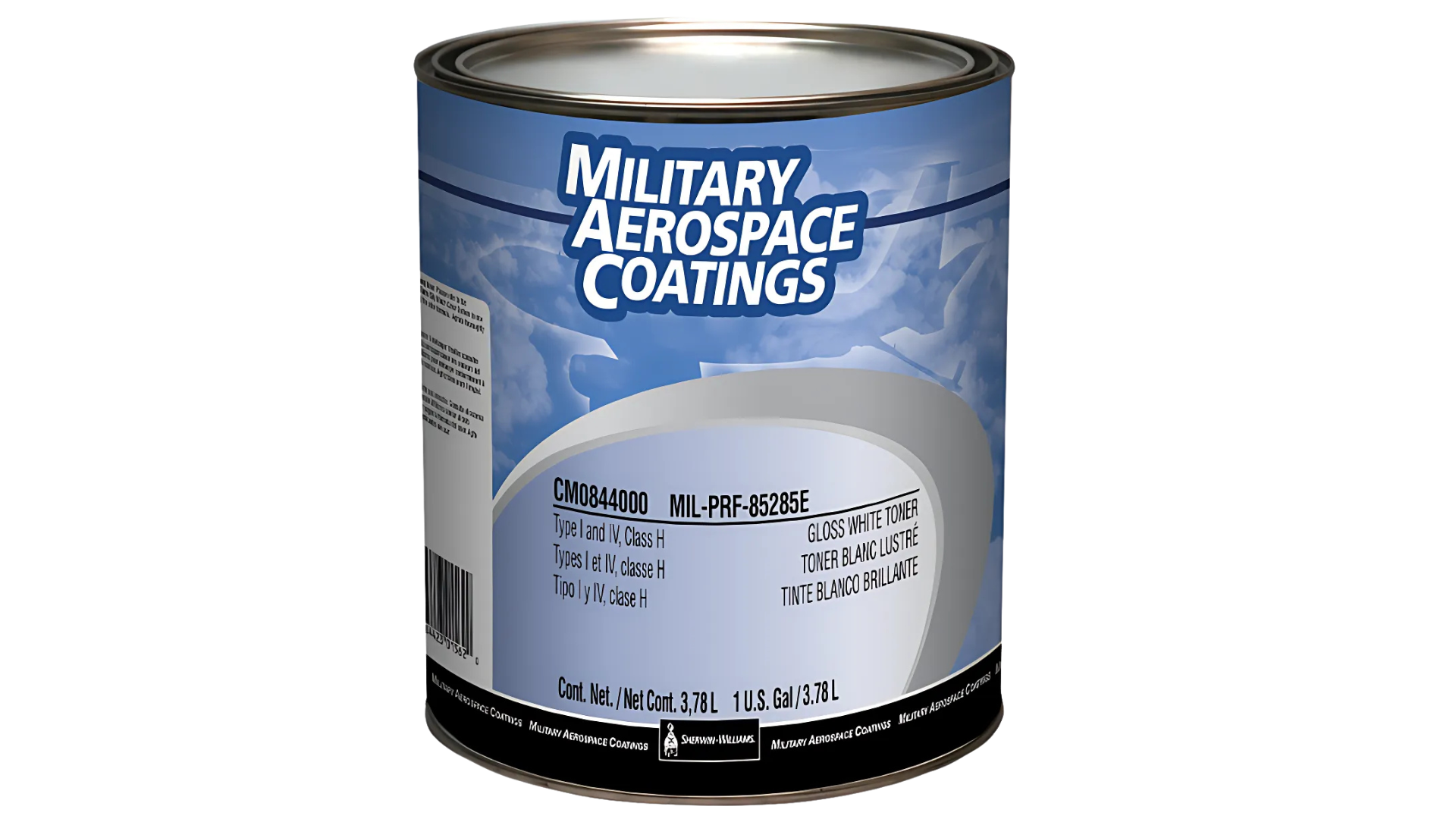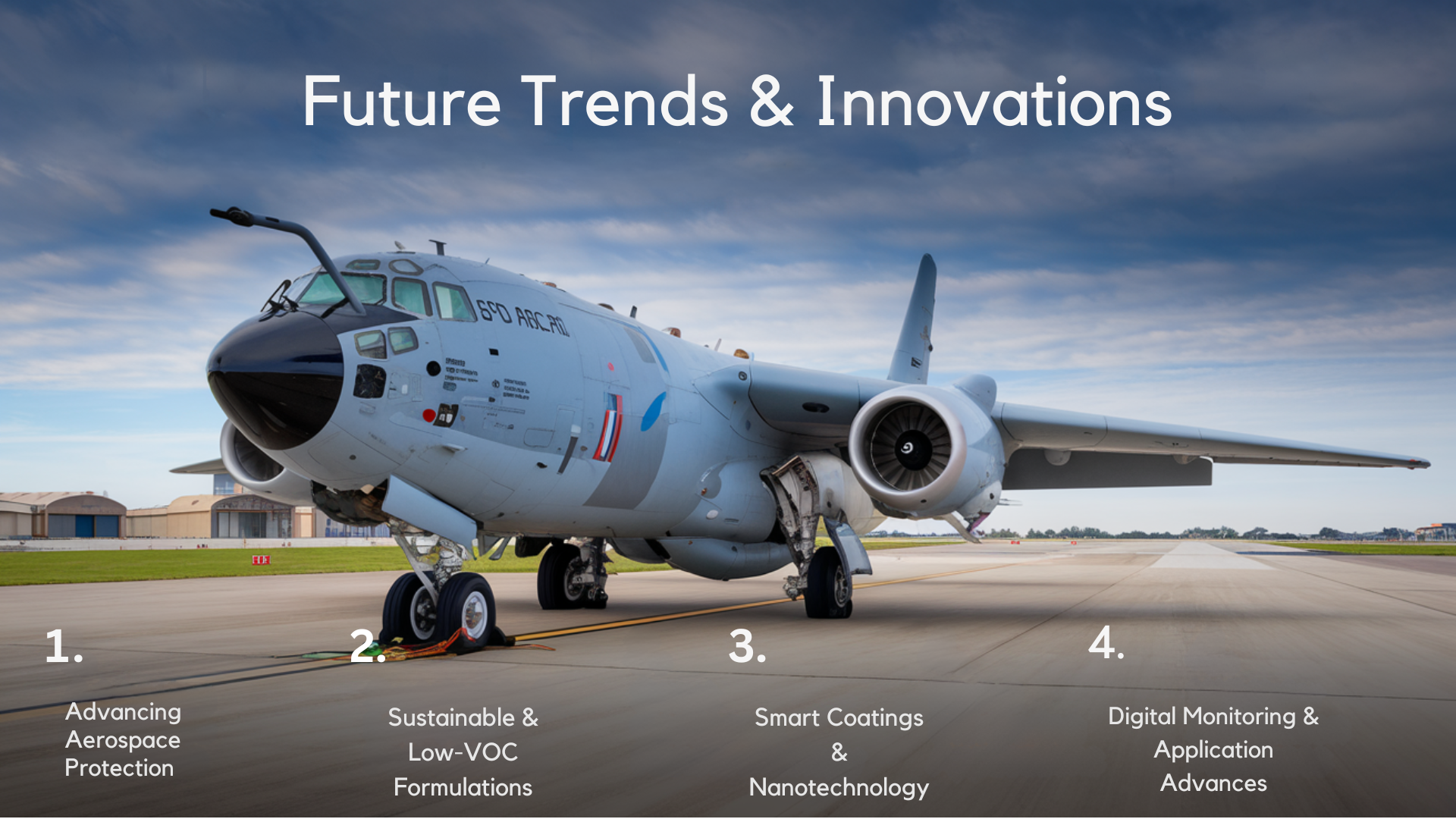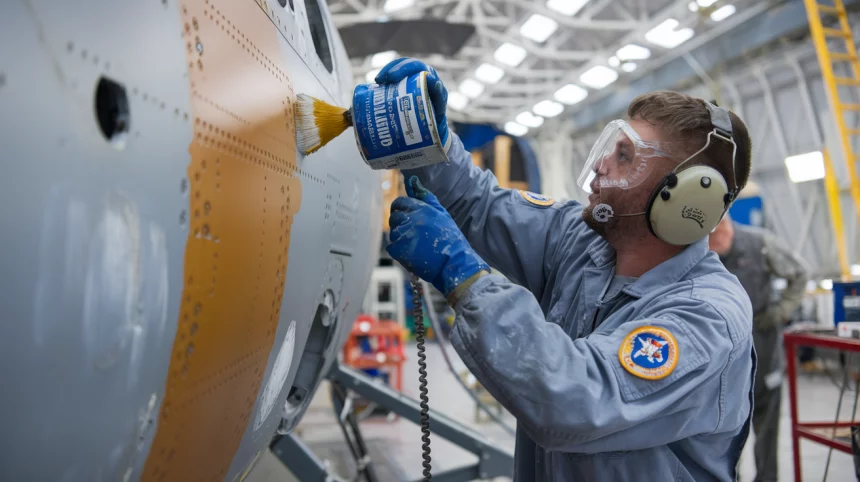In today’s post, I’ll explain exactly what MIL-PRF-85285 is and why it matters for aerospace applications. This military specification sets the standards for high-quality polyurethane coatings used on aircraft and support equipment.
These coatings protect vital components from harsh conditions while maintaining aircraft safety and longevity.
I’ve spent years working with these coatings and have seen firsthand how proper application extends the service life of military and commercial aircraft.
The right coating can mean the difference between costly repairs and smooth operations.
Let’s examine what makes this specification so important for aerospace professionals and how you can select the right coating for your needs.
What is MIL-PRF-85285?

MIL-PRF-85285 is a key military specification for polyurethane coatings used in aircraft and aerospace applications. This standard outlines the exact requirements for coatings that must be performed in tough conditions.
The specification covers both the chemical makeup and performance expectations of these specialized protective layers.
The coatings come in kit form with multiple components that must be mixed properly before use.
They create a strong, lasting finish that shields surfaces from various threats, including weather, chemicals, and physical damage.
Key Features & Composition of MIL-PRF-85285
MIL-PRF-85285 coatings stand out for their carefully crafted chemical makeup. When mixed and applied correctly, these two-component polyurethane coatings create a tough, lasting finish.
The base chemistry includes a polyurethane resin combined with a polyisocyanate curing agent, forming strong chemical bonds that resist breakdown.
The composition balances protection with application needs. Each formula maintains strict limits on volatile organic compounds (VOC) while delivering top-level protection.
The military-grade standards ensure these coatings perform reliably in harsh conditions where failure isn’t an option.
Types & Applications
Type I coatings serve aircraft directly with a VOC content of up to 420 grams per liter. These formulations withstand the unique challenges of flight, including rapid temperature changes, high UV exposure at altitude, and contact with aviation fluids.
Military aircraft like the F/A-18E and Bell AH-1 Cobra helicopters use these coatings.
Type II formulations protect ground support equipment with a lower VOC content of 340 g/l. These coatings guard against different threats, focusing on ground-level challenges like fuel spills, maintenance chemicals, and physical impacts from daily operations.
Type III offers an environmentally conscious option with just 50 g/l VOC content. This versatile formulation works on both aircraft and support equipment, making it ideal for operations with strict environmental controls.
Type IV provides enhanced weather resistance for aircraft with the same VOC content as Type I. These specialized coatings maintain their protective properties longer under harsh outdoor conditions and extended UV exposure.
Classes of Coatings
Class H represents high-solids formulations that minimize solvent content while maximizing protective material. These coatings apply efficiently and build thickness quickly, reducing application time and environmental impact.
Class W includes waterborne formulations that replace traditional solvents with water as the carrier. These environmentally friendly options reduce hazardous air pollutants while still meeting crucial performance standards.
Chemical & Performance Properties
The coatings resist a wide range of chemicals, including hydraulic fluids, aviation fuels, and cleaning solvents. This chemical resistance prevents damage to the underlying surfaces even when exposed to harsh substances.
They maintain structural integrity through temperature extremes from sub-zero conditions to intense heat. This thermal stability ensures the coating doesn’t crack, peel, or lose adhesion during rapid temperature changes.
UV resistance prevents breakdown from solar radiation, maintaining both protective properties and appearance over time. This feature is particularly important for aircraft exterior surfaces constantly exposed to intense sunlight.
The coatings adhere strongly to various materials, including aluminum, steel, titanium, and composite materials. This versatility makes them suitable for modern aerospace construction using multiple materials.
Evolution & Compliance: A Look at MIL-PRF-85285 Revisions
The MIL-PRF-85285 specification has evolved over decades to meet changing needs in aircraft protection. Each revision builds on previous knowledge while addressing new challenges.
This steady improvement ensures better protection for military and commercial aircraft while adapting to new environmental standards.
Modern versions balance performance with health and safety concerns. The changes reflect advancements in coating technology and increasing awareness of environmental impacts. Today’s formulations protect aircraft more effectively while reducing harmful chemicals.
Historical Development
MIL-PRF-85285A emerged in July 1987 as the first standardized version. This initial specification established baseline requirements for polyurethane coatings in aerospace applications. It created consistency across military aircraft fleets and support equipment.
The B through D revisions lasted from 1988 to 2009, and multiple amendments improved the coatings. These updates enhanced durability against harsher chemicals used in aviation.
The D version, with three amendments between 2006 and 2009, significantly improved performance in extreme conditions.
MIL-PRF-85285E arrived in 2012, focusing on better environmental compliance while maintaining protection standards. This revision reduced harmful substances without compromising coating effectiveness. It remained the standard for a decade before being replaced.
The current MIL-PRF-85285F took effect in May 2022, representing the most advanced version to date. This latest revision further reduces environmental impact while enhancing protection. It incorporates lessons from decades of field performance data.
Testing & Compliance Requirements
Certification for these coatings goes through the U.S. Naval Air Warfare Center at Patuxent River, Maryland. This facility conducts thorough testing to verify that products meet all specification requirements.
Their approval ensures coatings will perform reliably in real-world conditions.
Adhesion testing confirms coatings stay firmly attached under stress. Tests include cross-hatch cutting followed by tape removal to measure how well the coating remains bonded. Additional tests measure adhesion after exposure to fluids and environmental conditions.
Impact resistance testing verifies the coating can withstand physical damage. Direct and reverse impact tests measure the coating’s ability to absorb energy without cracking or separating from the substrate.
Salt spray testing exposes coated samples to corrosive conditions for extended periods. This simulates harsh marine environments and verifies corrosion protection. Some tests continue for thousands of hours to prove long-term performance.
Chemical resistance testing submerges samples in various fluids found in aviation environments. These include hydraulic fluids, fuel, lubricants, and cleaning solutions. Coatings must remain intact without softening, blistering, or losing adhesion.
Applications & Industry Impact
MIL-PRF-85285 coatings are used in a wide range of military, aerospace, and commercial applications. Their ability to protect surfaces in harsh conditions makes them valuable for any equipment facing tough environments.
From high-flying aircraft to ground vehicles, these coatings provide lasting protection.
The impact extends beyond military use into commercial markets seeking top-quality protection. Many industries adopt these military-grade coatings when standard commercial options fall short.
This crossover shows the true value of the specification’s stringent requirements.
| Category | Application | Benefits |
|---|---|---|
| Military & Aerospace | Fighter Jets (e.g., F/A-18E Blue Angels) | Protects against high-altitude, supersonic conditions while maintaining aesthetics. |
| Military Helicopters (Bell AH-1 Cobra, UH-1 Iroquois) | Shields against corrosion, saltwater exposure, and extreme temperatures. | |
| Unmanned Aerial Vehicles (UAVs) | Lightweight protection against moisture, UV damage, and heat-enhancing mission capabilities. | |
| Ground Support Equipment (fuel trucks, power generators, maintenance platforms) | Resists fuel spills, oil leaks, and outdoor wear with Type II chemical-resistant formulations. | |
| Commercial & Industrial | Automotive Industry | Improves vehicle longevity with chemical and temperature-resistant coatings for engine compartments and underbodies. |
| Heavy Equipment (mining, forestry, construction machinery) | Withstands extreme conditions similar to military applications. | |
| Space Exploration (spacecraft, satellites) | Provides thermal, radiation, and micrometeoroid impact protection in space. | |
| Marine Applications (naval vessels, commercial ships) | Resists saltwater corrosion, reducing maintenance and extending service life. |
Future Trends & Innovations in MIL-PRF-85285 Coatings

1. Advancing Aerospace Protection
Coating technology continues to improve, providing better durability and additional features. MIL-PRF-85285 remains essential as materials and manufacturing methods change.
2. Sustainable & Low-VOC Formulations
New coatings reduce environmental impact while maintaining performance. Type III versions with lower emissions improve worker safety. Water-based options cut odor, fire risk, and pollution. Manufacturers are also eliminating harmful chemicals while improving durability.
3. Smart Coatings & Nanotechnology
Self-repairing coatings help extend service life by sealing minor scratches. Nano-particles enhance protection against UV, wear, and heat. Temperature-control coatings keep surfaces stable, benefiting high-speed aircraft.
Some coatings now work with sensors to monitor surface conditions in real time.
4. Digital Monitoring & Application Advances
Automated systems ensure even application and reduce waste. Sensors track coating quality, catching issues early. Virtual models predict when maintenance is needed, preventing failures. AI helps improve formulations by analyzing performance data.
Conclusion
Throughout this article, we’ve seen how MIL-PRF-85285 has become the gold standard for aerospace protective coatings.
From fighter jets to support equipment, these specialized formulations shield vital assets against harsh conditions that would quickly damage lesser coatings.
What makes this specification truly valuable is its ongoing evolution. Each revision builds on decades of real-world performance data while incorporating new technologies and environmental considerations.
For those working with military or aerospace equipment, understanding these coating options isn’t just about compliance. It’s about making smart protection choices.
As sustainability and smart coating technologies advance, MIL-PRF-85285 will continue setting the benchmark for performance and protection.

